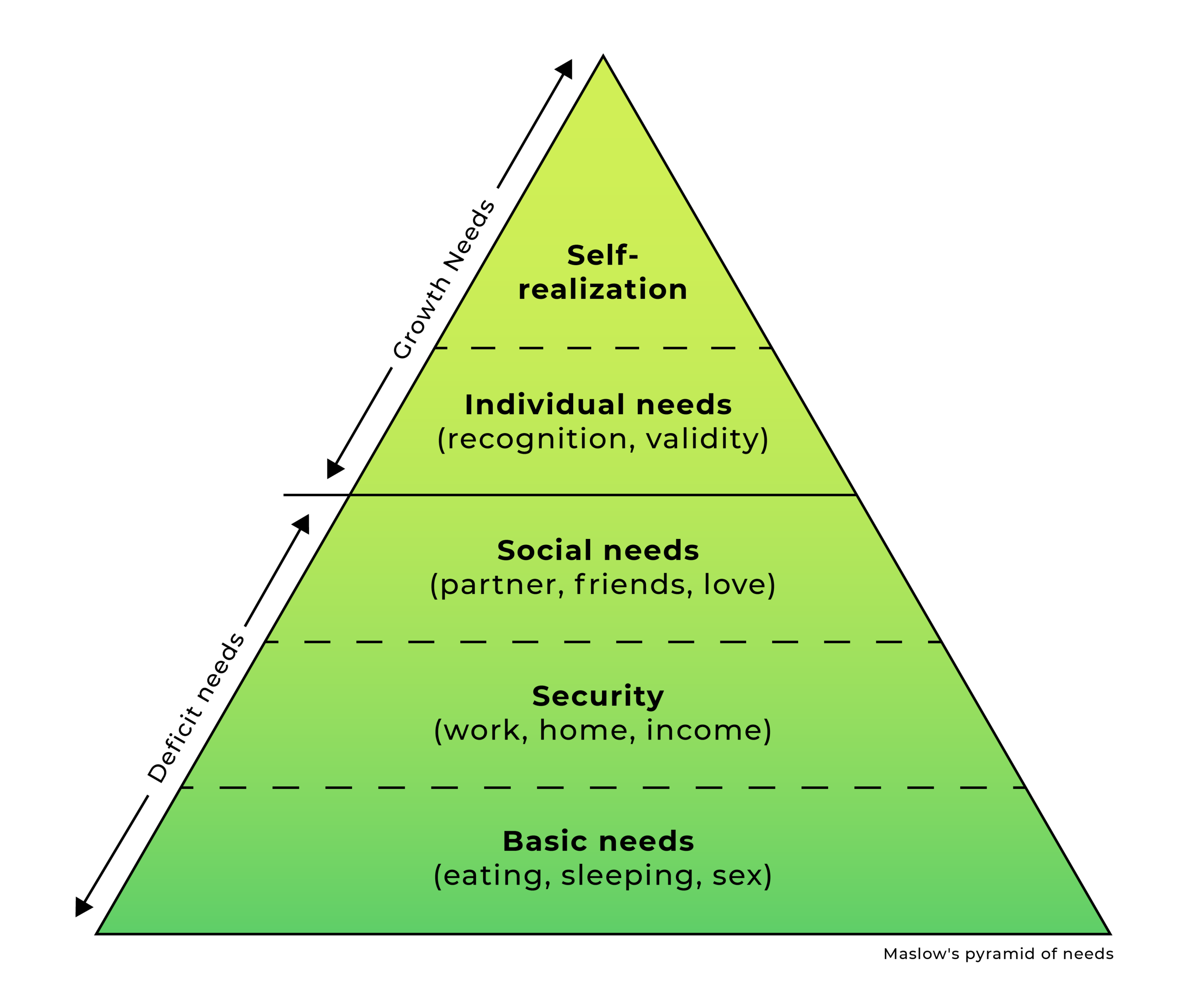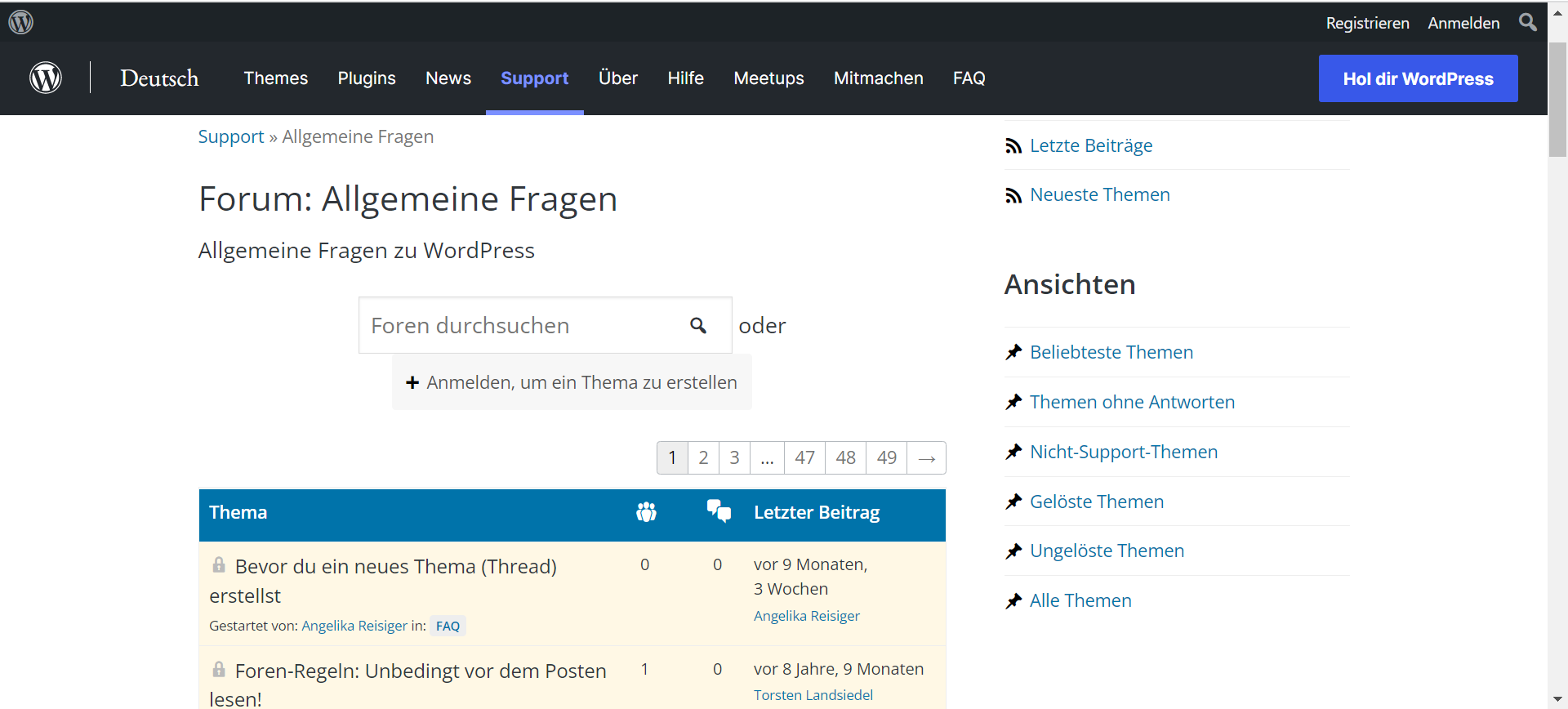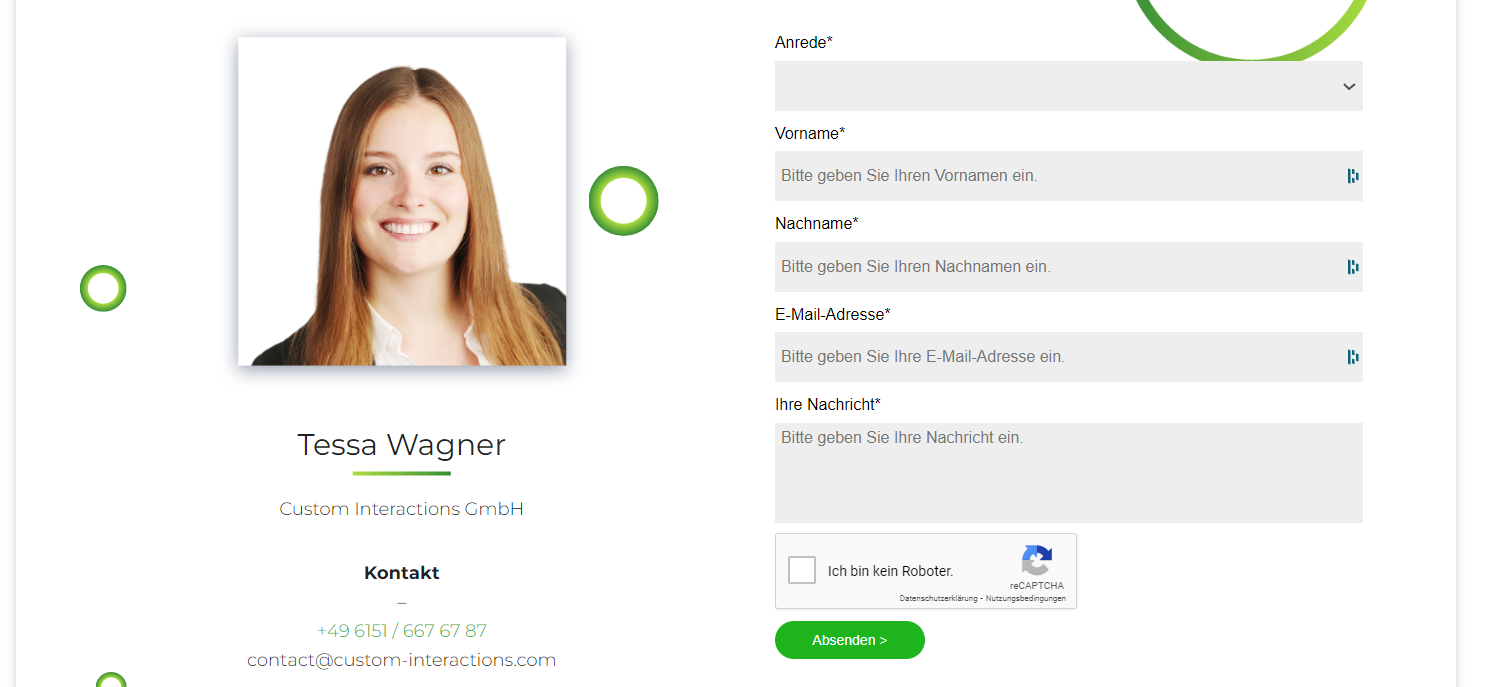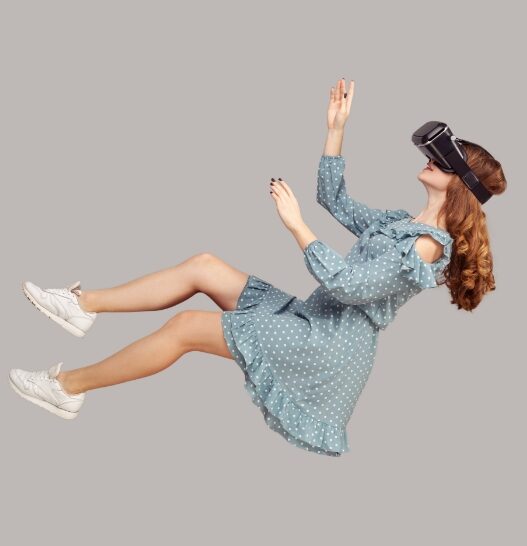Why is connectedness so important? How is the need for connectedness reflected in products? How can you take this into account for your own product? How do other products solve for satisfying the need for connectedness? What design patterns are there to trigger a sense of connectedness? What design elements are most in demand here?
With our great need series, we want to answer the essentially important question “What makes a product really cool and inspiring?” In this article, we’ll address the above questions and show you how to not only understand users’ need for connectedness, but also translate it into clear ideas for your product design to ensure that your product evokes positive emotions in users.
The needs series: what’s happened so far
In our introductory article, we noted the following: Positive emotions during use are essential for a positive user experience. This is partly composed of good usability, but also of the aforementioned emotions.
Positive emotions are achieved by satisfying essential human needs of users during use. So if your product is to provide a positive UX, user needs must be identified and incorporated through good product design.
In our introductory article, we identified the following needs as particularly relevant to technology use:
(according to Sarah Diefenbach: “Experience Design Tools – Approaches to Interaction Design from the Perspective of Psychological Needs“)
Let’s take a closer look at the need for connectedness.
Connectedness: The need to feel close to others, especially the people you care about. It’s about feeling socially included and close.
(Source: Sarah Diefenbach “Experience Design Tools – Approaches to Interaction Design from the Perspective of Psychological Needs“)
Of islands and people: Introduction to the need for “connectedness”
“No one is an island”. John Donne already stated this more than 400 years ago. And the earliest popular approaches to psychology also pick up on the need for connectedness as one of the most important. In Maslow’s pyramid of needs (1943/1954), for example, connectedness appears in the form of “social needs” directly after physiological needs (e.g., sleep and food) and the need for physical safety and integrity. Connectedness was already then one of the first needs for which a deficiency can be regularly assumed even in healthy people (Maslow).

There are various things behind the need for connectedness: On the one hand, it is the need to be connected to a concrete and familiar person and to feel connected to that person. Here is a typical example: You meet a good friend again after some time. Finally, you talk directly about previous shared experiences and bring each other up to date. In this context, sentences usually fall that start with “Do you remember back when…”. Family members or the partner are also typical addressees here.
On the other hand, connectedness does not have to be limited to a single person, but can also refer to a group, a nationality or a movement. Just think about the last soccer World Cup or your last concert visit. And when you go to the stadium on a soccer league match day, for example, you wear the jersey of “your” club and immediately see who else is on “your” side.
Connectedness is deeply rooted in us
Connectedness is so deeply rooted in everything a person does that there is no way to avoid this feeling, this experience. This is already evident in German when two strangers make themselves known or are introduced to each other. For example, I quite often introduce myself at private events with “Hello, my name is Michaela, I’m the mommy of …”, or “Hello, nice to meet you. My name is Michaela. I am the wife of …”.
Then there’s the situation where I’m introduced with “This is my daughter, Michaela.” Or, or, or. It is very similar in everyday business life. Here you are introduced in the context of a company: you are an employee/boss/colleague of person X/company Y. You are automatically introduced in the context of a person. Thereby one automatically puts the relation of a person to other persons or thing in the center.
This type of introduction conveys trust because it builds on what is known and helps to classify people in a “resource-friendly” way. This means I don’t have to think long and hard, but can draw my conclusions about the new, unfamiliar person directly from what I know about them. “Ah, if that’s Ben’s wife, she must be totally into technology”. These examples show how fundamentally the reference to other people is stored in our language. This alone shows how important connectedness is as a need.
Connectedness: Together we can achieve everything, we are never alone, and it tastes better in a group.
But connectedness also plays an incredibly important role outside our immediate private circle and professional environment. We can see how big this role ultimately is by looking at a few examples that show how much people long for connectedness.
The Danish TV station TV 2 advertises the feeling of connectedness. A campaign aims to show that there are often many more reasons for connectedness between groups than initially thought. Under the motto “All that we share,” the campaign impressively demonstrates how important and emotional the topic of “connectedness” is:
As mentioned above, belonging to a sports club can trigger a feeling of connectedness. Some clubs even make this their motto: Liverpool FC, in addition to its outstanding achievements in international soccer, is known above all for its anthem: “You’ll never walk alone” – the title symbolizes the cohesion among team members.
Where else do you feel solidarity as much as at the dinner table? Here we are often in the circle of our closest relatives. Advertising has also recognized how important this feeling of solidarity is: The food company Rügenwalder, for example, advertises its products with the phrase “It tastes best together” and currently also with “We share what we love.”
But politics is also focusing on solidarity. One of the best-known election slogans here is “Yes, we can.
In the professional environment, too, the experience of being connected with others is particularly important and a basis for positive cooperation, satisfaction of the entire team and also productivity. Not for nothing does LinkedIn also advertise with the words “Together is the new me”.
The list of examples is endless. Connectedness is an essential part of our human experience. So many products are advertised with a sense of connectedness, which shows that many people hope for a sense of connectedness from products, but also from politics and leisure events. Connectedness is often also a big part of the experience, very often even for products and services that are primarily intended to serve other purposes (such as food, sporting events, or television broadcasting).
The search for connectedness in technology use
Often, need plays a bigger role than initially expected. Let’s look at the very specific case of smartphone use: Here are the main reasons for using a smartphone:
- The search for cohesion (A large part of users’ time is spent on social media and messenger services).
- Social pressure
- The fear of missing out
All reasons related to a search for connectedness. Only after these three reasons comes the desire for habit, entertainment and amusement. (Source: MDR)
What does that mean for your product design?
But what role does this now play in product design? There are products that have set themselves the goal of exclusively satisfying this need.
First and foremost, there are the most obvious products: Partner exchanges on the Internet. The sole aim of these exchanges is to bring people together who are still alone. In other words, to turn an “I” into a “we. According to Statista, Parship – one of the largest providers – generated revenues of approximately 132 million euros in the first quarter of 2022 alone (source).
And Parship is far from the only platform of its kind. The Friendscout24 and Elitepartner portals familiar from TV commercials come directly to mind. Probably these are not nearly all providers on the German market either. According to Statista.de, more than 8 million users were active on partner exchanges on the Internet in 2015 in Germany alone. This clearly shows that connectedness is a huge topic not only linguistically, but also economically.
In addition to partner exchanges, however, there are other product groups that only work because people want to feel connected to other people. Here we could mention all the networks that aim to maintain personal contact and exchange. First and foremost, for example, Facebook. Here, user figures (Q2 2022 = 2.93 billion) and revenue (Q2 2022 approx. 28.82 billion US dollars (Meta Group total); source) show very clearly how great the potential of such products is.
But every other type of messaging service, phone provider, or short message service is also filled in part with private messages and private exchanges. Internet sites that allow you to upload and view photos, or forums that promote direct exchange with other people, are often based on the following idea: creating proximity to people you know or turning strangers into acquaintances.
Concrete examples: Features that trigger connectedness
People need other people. Consider this wisdom in your development and help your users connect or stay connected with other people as part of your product. Because then you’ll have a powerful feature built into your product.
What might that look like in concrete terms?
If you are designing a business product, for example, you could offer a forum where your users can exchange experiences and applications of your products. This way, you’ll get constant feedback from your customers and have a form of referral management built in at the same time.

(source: WordPress Forum Screenshot)
Do you develop a product that exists online and is used by several people at the same time? Then try to find out if there is a way to inform the user who from their circle of acquaintances/friends is also using the product. This can range from “Did you know-?” to friend lists to active sharing.
In addition, the feeling of personal contact always builds trust. People want contact with people. If you offer a way to get in touch on your site, this immediately comes across as much more likeable. You should name a direct contact person and not simply provide a contact form or a telephone number. Preferably even with a picture. “Ms/Mr XYZ is looking forward to your message/call!”.

Like buttons or buttons that allow reactions to a post are a very important feature to generate connectedness. Messenger services such as Telegram or WhatsApp have also recognized this. Here, it has recently become possible to react to individual messages with different smileys. You can express your attachment to a person with a heart smiley or the familiar thumbs-up.

(source: Telegram screenshot)
The ability to not only hear but also see your counterpart through video calling can greatly increase the sense of connection during a conversation.
The ways to incorporate the need for connectedness into your development are as varied and distinct as the need itself. Of course, these possibilities cannot all be fully circumscribed here. However, you now have an initial overview of what incorporating connectedness into the design of your own product can mean.
Conclusion
Connectedness is a particularly essential human need. You can incorporate it into the design of your product in very many ways. Even products that aren’t purely about creating connectedness can benefit greatly from making it so that two people feel closer. From Like buttons to embedding a forum to video telephony, there are a lot of possibilities here.
Does your product have features that satisfy the need for connectedness? Let us know in the comments.
Have questions about incorporating user needs in your specific case? Feel free to reach out via our contact form to schedule a free get-to-know-you call.
We are very much looking forward to your feedback!
Conclusion
Connectedness is a particularly essential human need. You can incorporate it into the design of your product in very many ways. Even products that aren’t purely about creating connectedness can benefit greatly from making it so that two people feel closer. From Like buttons to embedding a forum to video telephony, there are a lot of possibilities here.
Does your product have features that satisfy the need for connectedness? Let us know in the comments.
Have questions about incorporating user needs in your specific case? Feel free to reach out via our contact form to schedule a free get-to-know-you call.
We are very much looking forward to your feedback!
Our need series
Here is our overview of the articles in the series:
Part 1: Introduction
Part 2: Connectedness
Part 3: Security
Part 4: Competence
Part 5: Popularity
Part 6: Stimulation
Part 7: Autonomy
Part 8: Meaningfulness
Part 9: 6 reasons why you should know your users’ needs



